| GABE93 |
| (.275 member) |
| 03/04/17 08:07 PM |
|
|
Continuing the post
Applying red oil to a Turkish walnut blank below. The actual colour of the wood is nicer than my poor images indicate. It is better to store wood unfinished but I can't resist admiring my wood often so I apply a basic finish to the sides and leave the edges and ends raw.
Each side here is sanded to 320g and whiskered then red oil applied, no thinners or heat but I add lead or cobalt driers, usually 2 drops to 1/4 teaspoon of oil. The driers are added to a small amount of oil each time I oil the blank. I don't return any oil left over from each rubbing to the main bottle. I keep the main bottle free of driers.
On this blank I applied 6-7 coats late last year, 1-2 weeks between coats, then left it alone. I add driers right from the start as I want all the oil in the wood to cure hard as possible. Just for the images below I quickly applied a thin coat straight from the bottle, no driers.
You can see how the red oil on walnut is a colour enhancer, not a stain. Many fellows think red oil will turn walnut red. On the white pine fixture the red is clearly obvious. The walnut here has not turned red, the colour has deepened and become a bit richer.
The bits of wood screwed to the blank allow me to handle it with my weak arms. I still cant hold the blank in one hand and rub oil on it with the other hand.
[image]
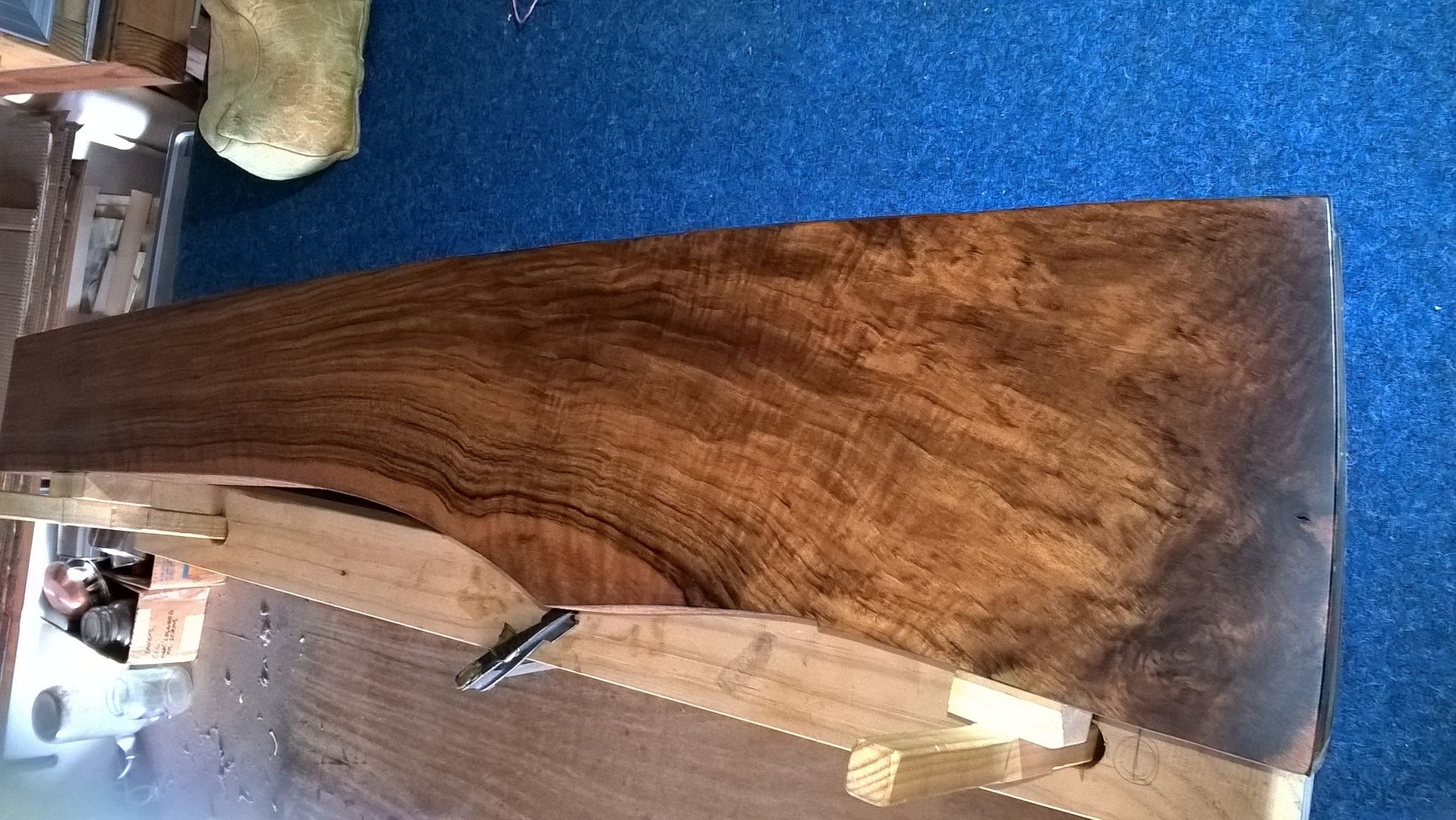 [/image] [image]
[/image] [image]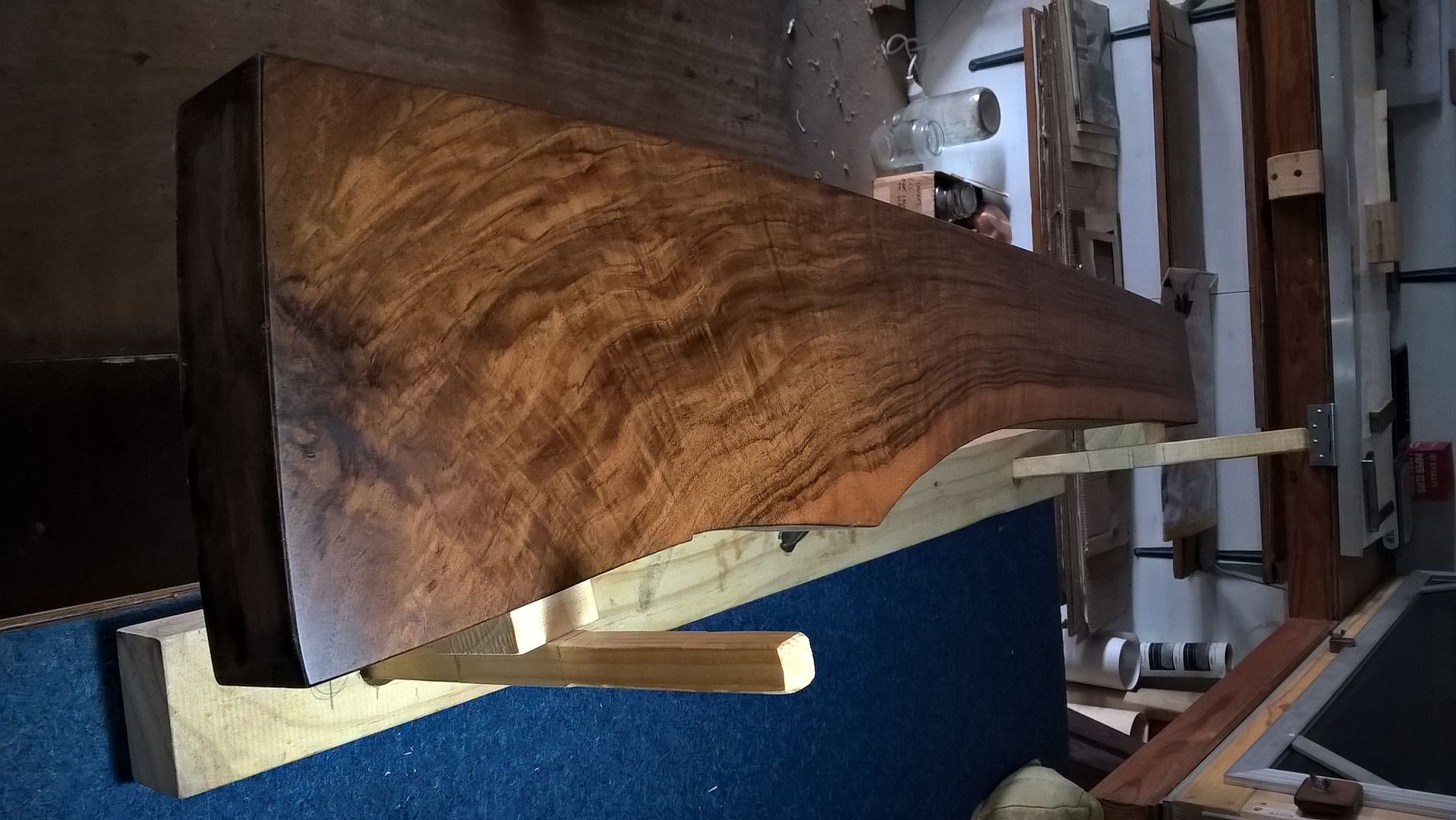 [/image] [image]
[/image] [image] [/image] [image]
[/image] [image]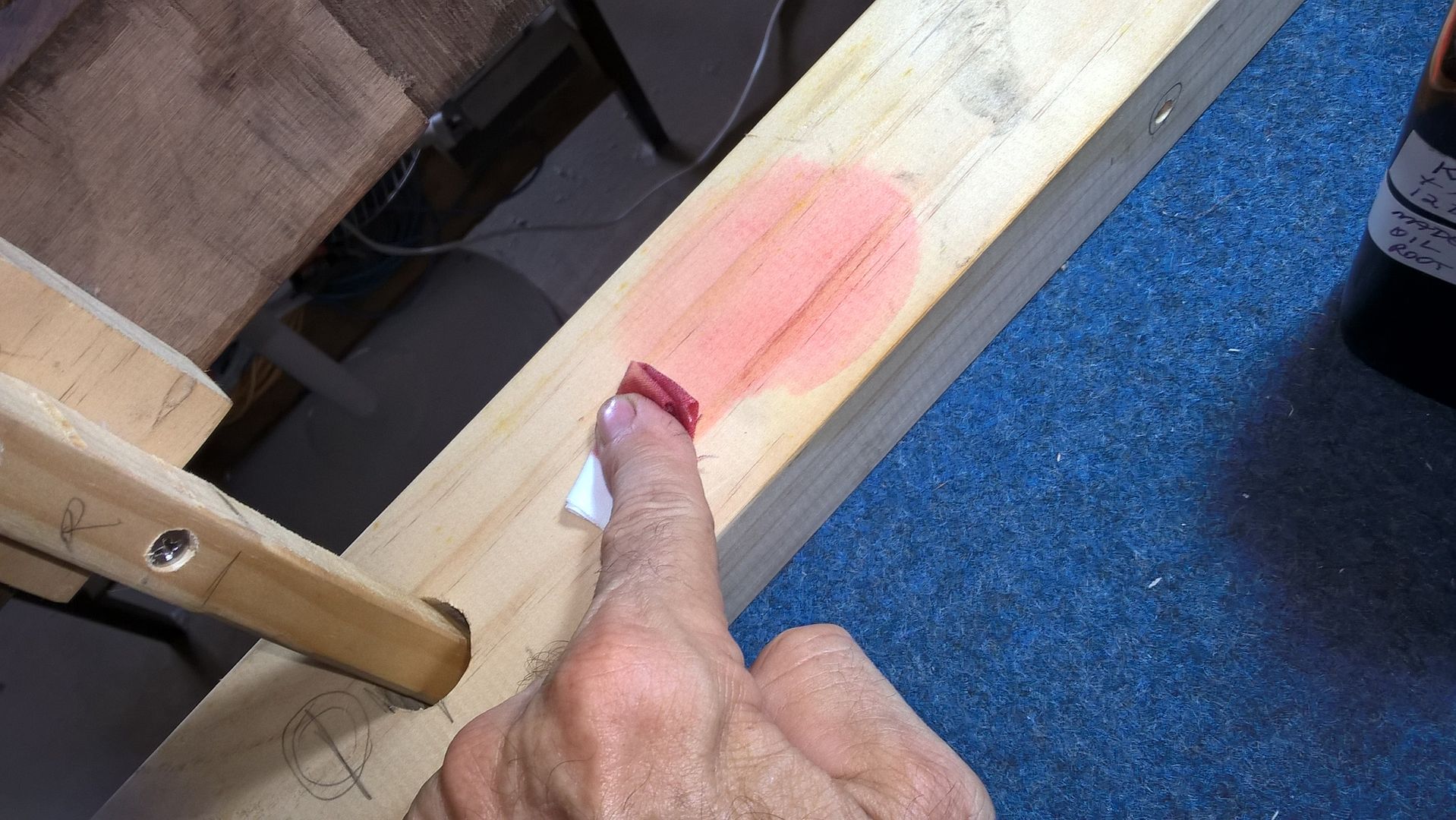 [/image] [image]
[/image] [image]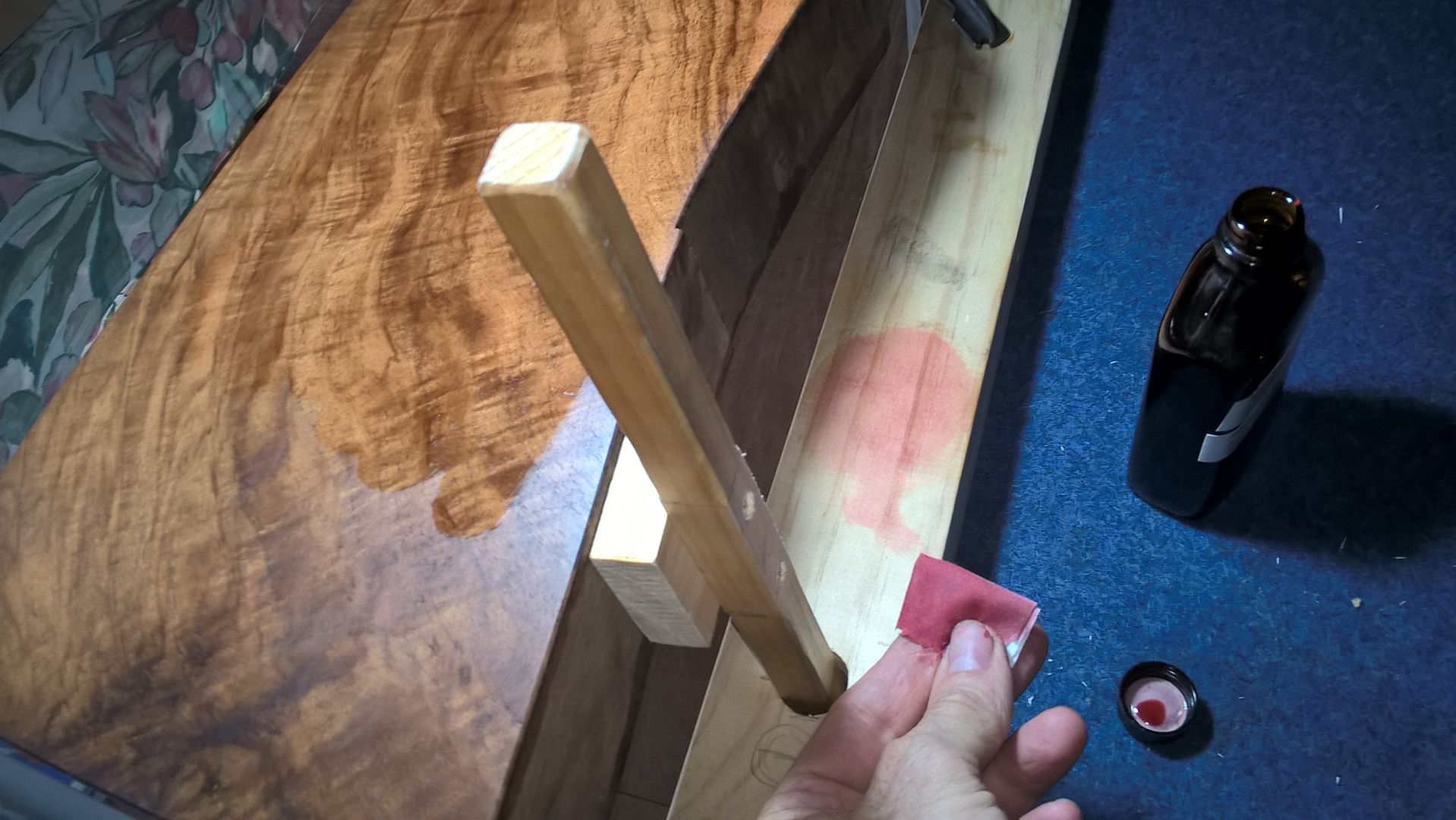 [/image] [image]
[/image] [image]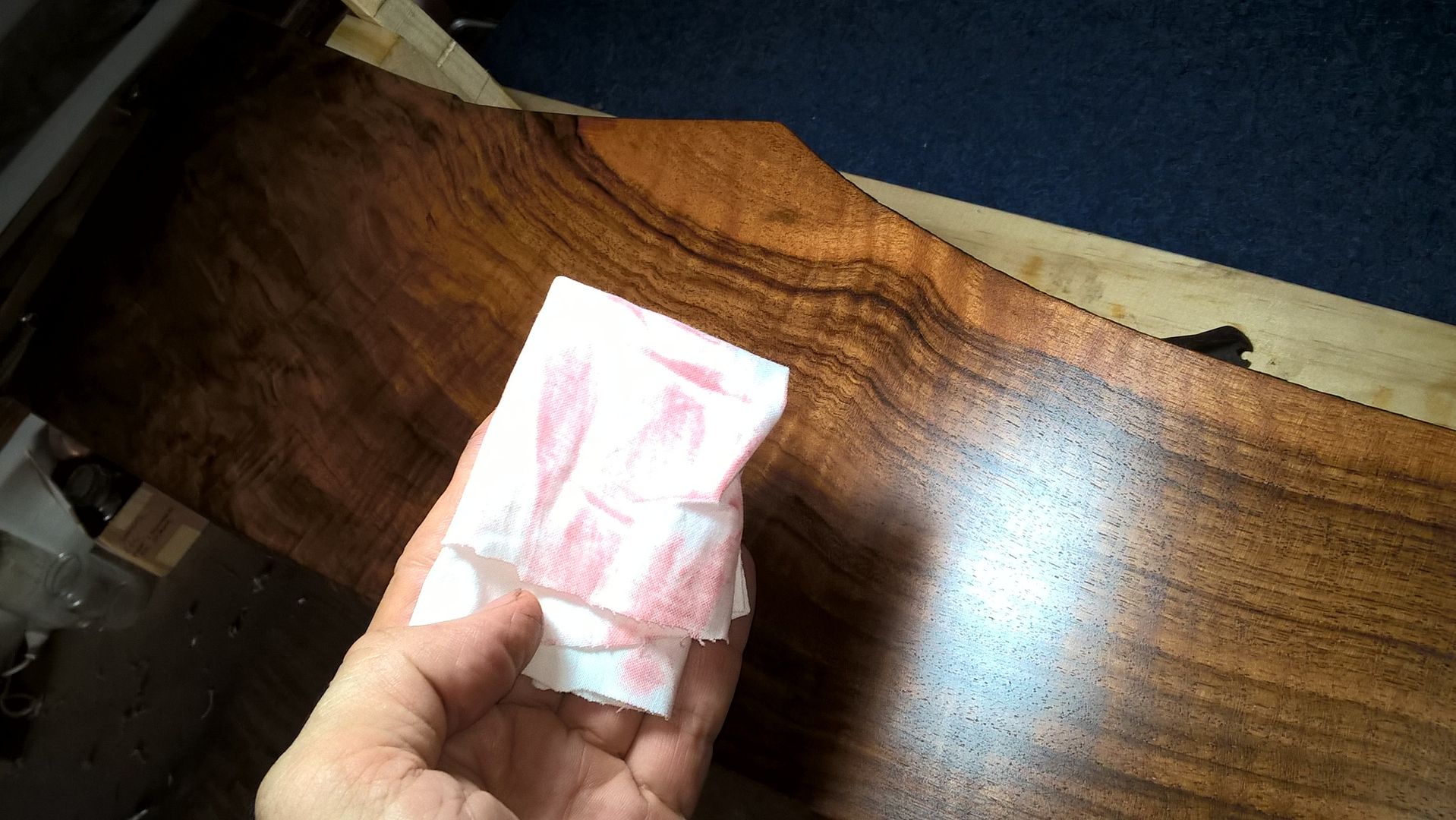 [/image] [image]
[/image] [image]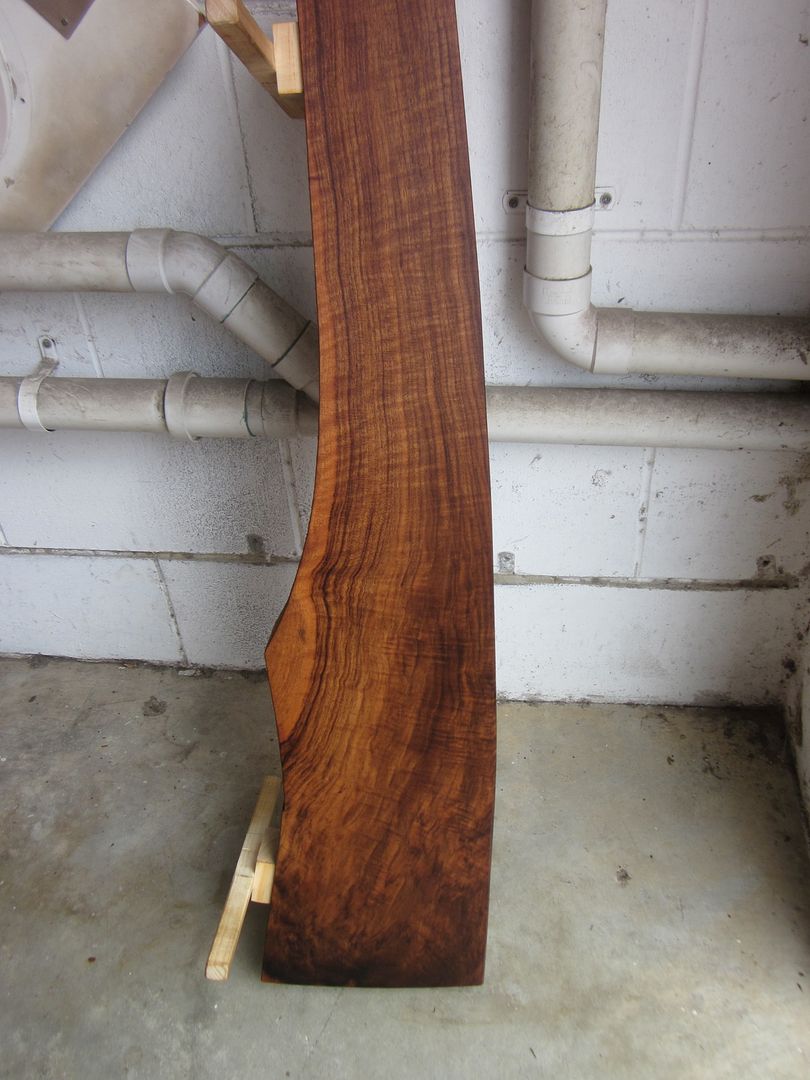 [/image] [image]
[/image] [image]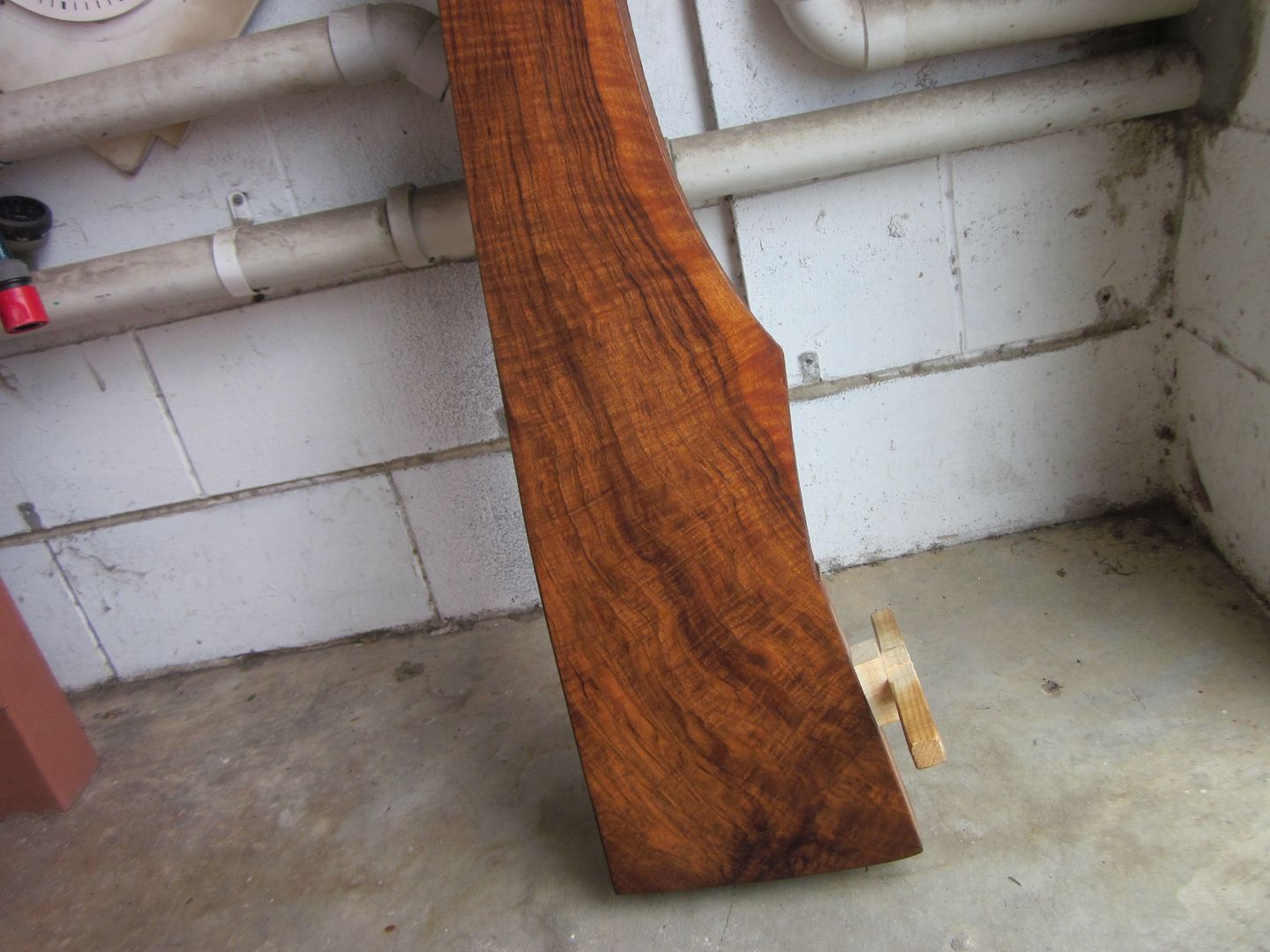 [/image]
[/image]This would be a good spot to insert a link to a video about gunmaking at Purdey. Runs for 1.5 hrs, the stock finish bit is at the end but the whole vid is good. The finisher mentions cleaning the raw wood with a mild acid solution, have not tried that yet. You can see the finisher using red oil and the "Slacum" oil for the harder coats. They don't reveal the exact ingredients. I'll discuss my simple version when I discuss the Amber varnish and pore filling, on some walnut offcuts. https://www.youtube.com/watch?v=fac892fHBME
Below, image of the thinners and driers I like. The thinners is a citrus type. Google Livos Australia, or Livos Germany, to read about it. Livos also makes various linseed based oils, I have some here, but they have too many other ingredients that I feel soften the finish a bit.
I prefer this thinners, it evaporates completely and is claimed to be a better dilutent for wood oils. I have read opinions that the petroleum based thinners sort of breakdown the molecules of the oil a little.
I know pure gum turpentine is the traditional thinners for linseed. If you research gum turps you will see it ranges in quality a lot. I have tried to find the very best, some can't be obtained due to shipping restrictions, but I have not yet found any that evaporates completely.
I test it by smearing some on a glass plate and watching how it evaporates. All I have tried leave a residue on the glass. After a few days some of the residue can harden a bit more but still wipes off easily. This residue remains in the finish and slightly softens the finish. It may be a small point but I did say at the beginning I would talk about optimizing the linseed.
The driers here, one from James Groves Gallery and the Pebeo. Google both names for more info. Pebeo products are available in various countries. James Groves is an artist in the USA and makes various products. He has an extensive website. I will post direct links to him when I post about his Amber and Copal varnish's etc,etc.
Combining different types of driers increase's the hardening effect. The different driers work in slightly different ways on the oil. Be aware driers like this are regarded as a bit unhealthy. Wear gloves. They don't seem to have affected me too much over many years use in various products, I just hide the extra fingers near my elbow with long sleeves!
[image]
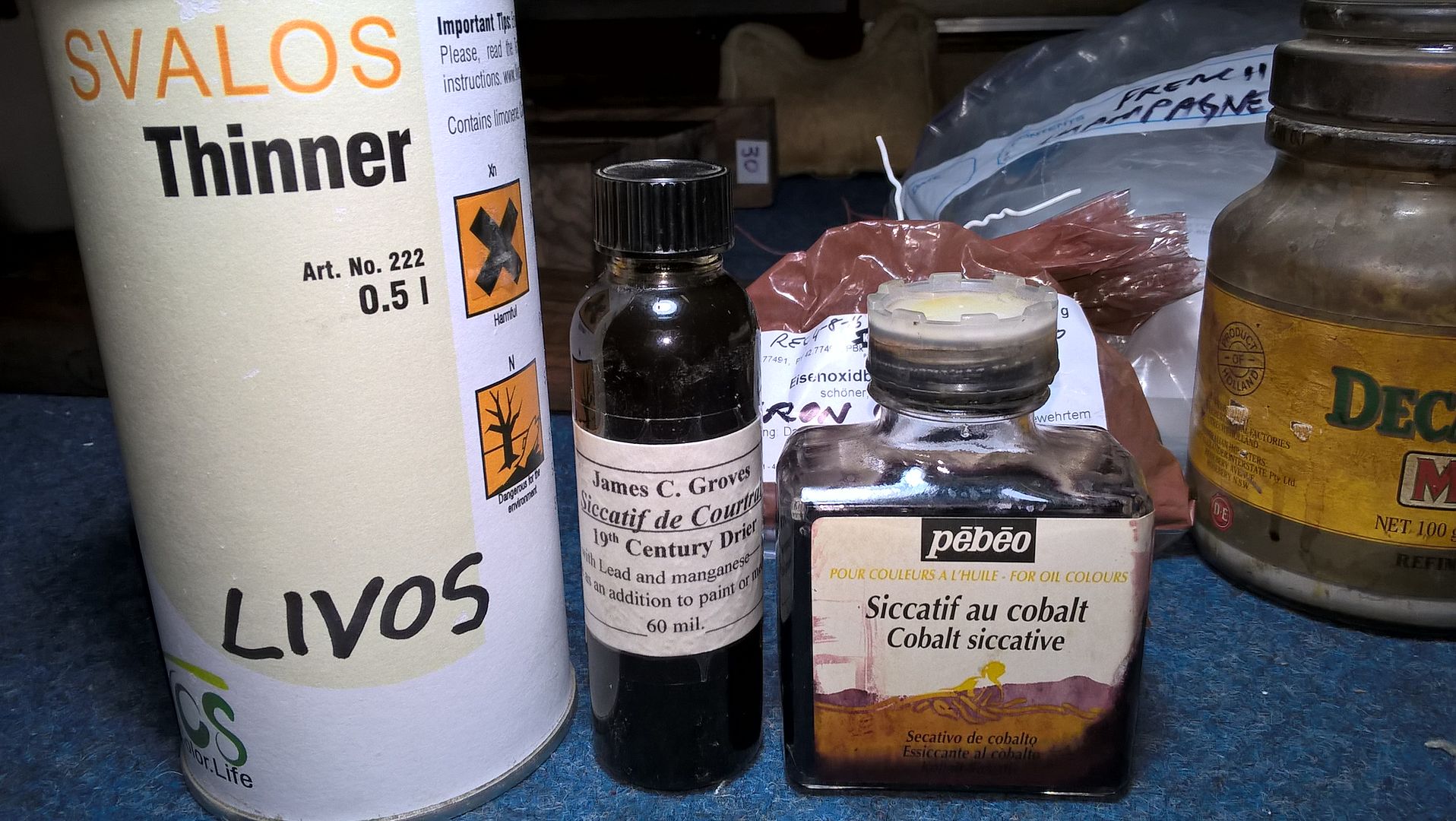 [/image]
[/image]